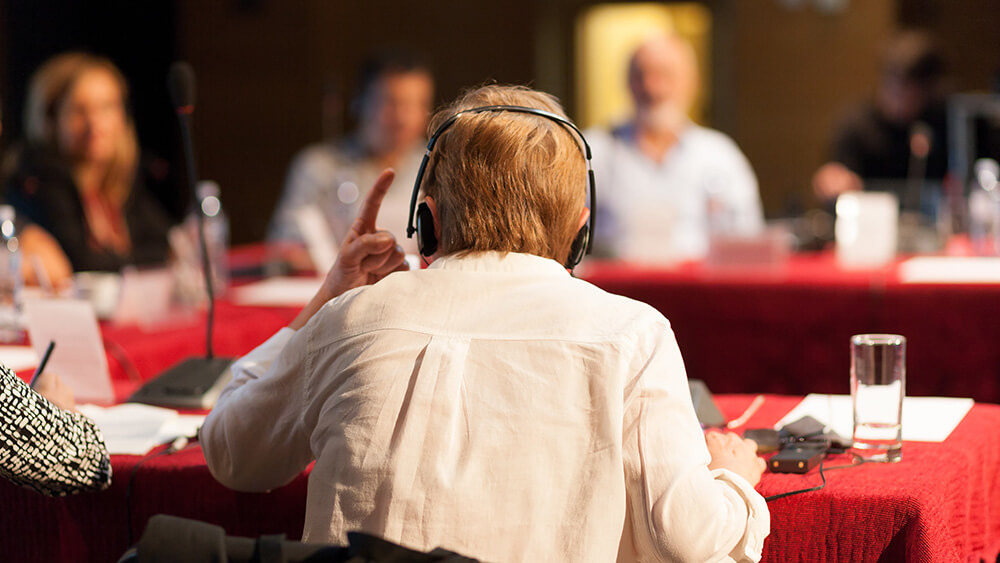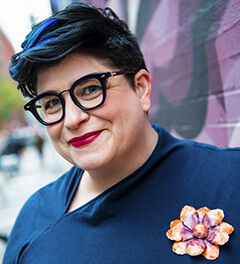
The political divide is top of mind when it comes to the places planners bring their events, but what role it plays among their participants is often overlooked.
Local politics plays a large role in site selection, according to the recent “2024 Meetings Industry Trends Report” conducted by Future Partners for the DMO industry. More than half of planners said that local or state laws have caused them to reconsider a destination for their meetings — with general political reputation taking the lead on on their list of considerations. That will only become more pronounced in the coming years: More than three out of five planners anticipate the impact of local politics on destination selection will increase.
While the report highlights how the political divide is top of mind when it comes to the places planners bring their events to, what role does it play inside their meeting rooms, among their participants?
As the 2024 election cycle started to heat up earlier this year, Jess Pettitt, CSP, a speaker and consultant with decades of expertise in diversity and inclusion topics, thought back to the 2016 presidential election and how unprepared she found event organizers to be in terms of its impact on their audiences. At events held the day after the 2016 election, “people showed up ready for a funeral — or with party hats on,” she told Convene, at spaces “where they thought everybody was like them.” And both groups, Pettitt wrote in a LinkedIn post, “were surprised that the communities they loved were more divided than they had imagined.”

‘We know there’s a contentious election coming. We know the dates, but it’s not part of our event planning mindsets.’
— Jess Pettitt, CSP
There have been multiple elections and a contested presidential election since 2016, but many groups, in Pettitt’s experience, haven’t recovered from the effects of the polarization that became apparent eight years ago, she said. That’s true for both her conservative and liberal clients — “It’s never gone away,” she said. A recent study conducted jointly by researchers at Rice and Stanford universities to examine whether extremist views were inflating the perceptions of a divided U.S., supports Pettitt’s view. It concluded that even Americans with mainstream views are more polarized than ever.
A few months ago, Pettitt began reaching out to clients who have booked her for later this year — including a meeting where she is scheduled to talk on Nov. 6, the day after the election — to ask if they had plans for how to handle events in the midst of a polarizing election. The overwhelming response, she said, was, “‘No, we’re not talking about that. We’re just not.’”
There are many things that can take planners by surprise, but in this case, “we know there’s a contentious election coming,” Pettitt said. “We know the dates, but it’s not part of our event planning mindsets.” Meeting planners, she added, “have a backup plan if they run out of tacos, but they’re not planning for how the election is going to impact their event.”
It’s a missed opportunity, Pettitt said, not only to prepare for what lies ahead, but to create spaces where people feel more comfortable expressing their views. During her presentations, Pettitt often provides a number for people to text questions to anonymously, “because they’re so uncomfortable about how they’re going to ask something or how it’s going to be taken by other people,” she said. “And I get dozens of comments, like: ‘This is the first time I have felt like I can talk about the conflicting political agendas that I believe in.’”
Organizations face all kinds of issues that divide opinion — climate change, the war between Israel and Hamas, and abortion legislation, to name a highly visible few. “The human tendency is to think that most people think the same as we do, and to not know how to navigate it when they don’t,” Pettitt said. “The issue is not the difference of opinions, it’s that no one knows what to do with them.”
‘Now Is the Time to Address the Uncomfortable’
Pettitt, who calls herself a “conversation stirrer,” became practiced at wading into hard conversations when she worked as an administrator running multicultural centers at universities across the U.S. By virtue of her position, Pettitt said, whenever crises tied to political or other events arose, she was almost always at the epicenter of the conversations about how they should be handled. Two decades ago, Pettitt began to build her own speaking and consulting business, helping leaders and teams learn to confront their own discomfort with controversial topics in order “to prepare in advance for the thing that hasn’t happened yet,” she said. “If the factors are right, we can have hard conversations about all kinds of things. But change the factors or the people or the topic, and then, all of a sudden, we don’t use those skills.”
Pettitt told Convene she feels a particular responsibility to clients to address the unspoken points of view held by participants at their events, because belonging is at the core of many of their gatherings. “It’s important for people to feel like they get to be part of a community,” she said, “and to take our masks off and be with other people who get it.”
RELATED: Planning for Conflict at Your Event
The feeling of division “is going to increase at all conferences as we get closer and closer to the election,” Pettitt wrote on LinkedIn. “Now is the time to address the uncomfortable so that we are prepared, can recognize concerns before they happen, and know how to respond without exacerbating polarization.”
Pettitt identified three ways for meeting organizers and organizations to approach events in a politically divided world:
Prepare. Many organizations create mission and vision statements that nobody reads or are so fluffy as to be meaningless, Pettitt said. When you’re clear on your event’s mission and purpose, then you can use them to make informed decisions about moving forward, including knowing what doesn’t align with your values, she said. The things that your organization stands for “should be lived and felt and experienced by the people who are attending your events, working as staff, or using your services. They should be identifiable.”
Recognize. It can be hard for leaders to recognize that people may not feel like they can express themselves at their events, or struggle with feeling that they belong, “because generally leaders are not experiencing the problem,” Pettitt said. “It’s very hard to recognize something you don’t experience. But trust me, there are people who are experiencing this.” Ask yourself, she wrote on her LinkedIn post, “Can you provide space for important conversations where everyone belongs?”
Respond. Meeting planners consciously make plans in advance to respond “to almost any disaster scenario, from active shooters to blackouts to food poisoning and beyond,” Pettitt wrote. And planners can make a conscious choice to plan how to respond to political conflict in advance, she told Convene. “But we’re not doing that because it’s scary and unknown.”
One place to start, Pettitt said, is to include more connection points for event participants. One possibility is having a phone number available, so that participants have someone to talk to about conflict and discomfort over politics. And then respond, she said. Because what happens is that we provide the numbers, but then we either don’t check the voicemail or respond unskillfully, she said. “And that’s even worse.”
Barbara Palmer is deputy editor of Convene.
